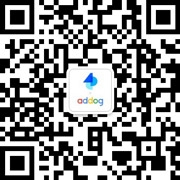本案例默认翻译为中文,点击可切换回原语言
已切换成原语言,点击可翻译成中文
无所事事有害
案例简介:为什么这项工作与媒体相关? 在一系列描述性别歧视行为的互动YouTube视频中,“无所事事有害” 取代了已建立的Google基础架构,并将其颠覆了,通过彻底改变用户与YouTube互动的方式,在平台上引入了新的 “去定位” 功能 “信息卡” (按钮)。在武器化这种原本良性的功能时,我们通过在用户与我们的视频互动以阻止他们所看到的内容后,实际上将其从目标列表中删除来奖励用户行为。那些没有采取行动的人会收到逐渐恶化的信息,挑战他们最终采取行动制止性别歧视行为。 背景 对女性的不尊重,例如性别歧视的笑话,客观化和 “不适当” 的评论,是对女性暴力的最一致的预测因素,但在澳大利亚,人们普遍接受了这些行为和态度。简报的研究发现,尽管许多人希望在看到这种行为时进行干预,但只有14% 的人承认会这样做。主要是因为他们根本不知道怎么做。 为了增强和支持旁观者的能力,使他们有动力和技能来应对这些情况,我们需要创造一些创新和引人入胜的东西,来推动现实世界的变化-激励和教育这些人如何行动。 描述创意/见解 (投票30%) 体验使用五个互动视频,其中一个男人开始对对话进行不适当和贬义的评论。当他发表评论时,会出现一个按钮,要求观众 “做点什么”。这决定了互动的结果。 除了鼓励用户采取行动之外,交互式体验还颠覆了 “重新定位” 的概念。传统的广告会根据用户与交流的互动来重新定位用户,而我们的广告活动则 “降低了与我们的广告互动的人的针对性,从而通过以下信息奖励观众的亲社会行为: 感谢您为阻止性别歧视行为所做的事情。你不会再看到这些广告了。简而言之,如果他们采取行动制止这种行为,他们将再也看不到广告了。相比之下,那些未能互动的人将一次又一次地收到广告,性别歧视的评论日益恶化,鼓励用户干预的信息卡 (按钮) 变得越来越尖锐。 描述策略 (投票20%) 2015研究发现,只有14% 的澳大利亚人在看到对女性的不尊重时可能会采取行动。此外,我们的消费者审计显示,年龄在25-35岁之间的男性和女性最有可能认识到不适当的性别歧视行为,但没有动力采取行动。这次审计还告诉我们,为了让这个小组采取行动,我们需要让他们确信他们的行动会带来积极的变化,而不是让情况变得更糟。 我们相应的沟通策略探讨了如果干预正常化,性别歧视情况将如何 “发挥作用”。通过在线复制现实生活中的情况,我们将 “点击” 的简单动作等同于表演,从而增加了观众在现实生活中 “做某事” 的可能性。 描述执行 (投票20%) YouTube信息卡 (按钮) 在屏幕上显示7秒钟,完美地,与您听到贬损性评论时必须采取的行动时间差不多。但是,为了使现有功能能够传递我们的信息,我们直接与Google的创意开发团队合作,实施了我们的交互性和 “去目标化” 方法。 然后,该媒体机构开发了一种解决方案,以利用Google的创新来确保我们以数字方式最大程度地覆盖受众,依次为目标受众提供每种恶化的情况,直到他们决定采取行动并 “做点什么” 来阻止这种行为。如果用户选择什么都不做,他们将继续成为广告系列的目标,并为更多不适当行为持续的场景提供服务,每个视频都会恶化。如果他们互动以阻止行为,他们将永远不会再看到广告 (或行为)-就像在现实生活中一样。 列出结果 (投票30%) 首先,让我们记住,25-35岁的澳大利亚人的人口规模为370万人 (Roy Morgan Single Source,2018年12月)。 我们非常有针对性的活动实现了340万的累积影响,累积印象超过1200万。这个想法实现了1880万和几乎10,000卡点击的进一步公关。然而,按照戛纳的标准,数字并不大… …。竞选后的一项调查发现,看到竞选活动的人中有一半表示,当他们看到对女性的不尊重时,这激励了他们采取行动 (Urbis竞选跟踪研究,2019)。这一回应意义重大,是对该主题的相关性和我们所利用的公众支持的明确反应。 也证明了使用innova积极地对待媒体和交流,我们可以一次点击一下就改变人们对性别歧视的行为。 请告诉我们激发您竞选活动的社会行为和/或文化见解 为了更好地了解我们的听众,我们借鉴了行为改变理论。它表明,行为干预在增加人们采取行动的动机 (激励和社会正常化) 并使行动变得容易 (能力和机会) 时最成功。我们需要激励我们的观众采取行动,同时加强这可能是多么容易。 认识到目前缺乏干预主义行为的动机或任何社会规范,这使我们在与听众交谈的方式上具有针对性。通过发展一个互动的想法,并破坏了学习的数字行为,我们能够给人们一种对他们的行为的主人翁感,并清楚地说明了他们的干预只能改善这种情况。这反过来意味着我们的观众更有可能在现实世界中行动。
无所事事有害
案例简介:Why is this work relevant for Media? In a series of interactive YouTube videos depicting sexist behaviour ‘Doing Nothing Does Harm’ took established Google infrastructure and turned it on its head, introducing a new ‘de-targeting’ functionality on the platform by revolutionising the way users interact with YouTube ‘info cards’ (buttons). In weaponizing this otherwise benign function, we rewarded user behaviour by actually removing people from our target list once they interacted with our videos to stop what they were seeing. Those who didn’t act were served progressively worsening messages, challenging them to eventually take action to stop the sexist behaviour. Background Disrespect towards women like sexist jokes, objectification and ‘inappropriate’ comments are amongst the most consistent predictors of violence towards women, but in Australia there is widespread acceptance of these behaviours and attitudes. Research informing the brief found that whilst many people would like to intervene when they see this kind of behaviour, only 14% of people admitted they would. Mostly because they simply don’t know how. To empower and support bystanders so they are motivated and skilled to respond to these situations, we needed to create something innovative and engaging that would drive real world change – inspiring and educating these people on how to act. Describe the creative idea/insights (30% of vote) The experience uses five interactive videos where a man starts peppering the conversation with inappropriate and derogatory comments about women. When he makes the comment, a button appears, asking the viewer to ‘do something.’ This dictates the outcome of the interaction. Beyond merely encouraging users to act though, the interactive experience also flipped the concept of ‘retargeting’ on its head. Whereas traditional advertising retargets users based on their interaction with the communication, our campaign ‘de-targeted’ those who interacted with our ads, rewarding viewers for pro-social behaviour with this message: THANKS FOR DOING SOMETHING TO STOP SEXIST BEHAVIOUR. YOU WON’T SEE THESE ADS AGAIN. In short, if they took action to stop the behaviour, they’d never see the ads again. In contrast, those that failed to interact would be served the ad again and again, the sexist comments worsening and the Info Cards (buttons) encouraging users to intervene becoming increasingly pointed. Describe the strategy (20% of vote) 2015 research found that only 14% of Australians are likely to act when they see disrespect towards women. Furthermore, our consumer audit showed that men and women aged 25-35 were the most likely to recognise inappropriate sexist behaviour, but be unmotivated to act. This audit also told us that in order for this group to take action, we needed to make them feel certain that their actions would cause positive change and not make a situation worse. Our corresponding communication strategy explored how sexist situations would ‘play out’ if intervention was normalised. By replicating real life situations online, we equated the easy action of ‘clicking’ with acting, hereby increasing the likelihood of our audience ‘doing something’ in real life. Describe the execution (20% of vote) YouTube info cards (buttons) appear on screen for 7 seconds, perfectly, about the same amount of time you have to act when you hear a derogatory comment, before the moment passes. But to enable this existing functionality to deliver our message, we worked directly with Google’s creative development team to implement our interactivity and ‘de-targeting’ approach. The media agency then developed a solution to leverage the innovation with Google to ensure we maximised reach of our audience digitally, sequentially serving each worsening scenario to our target audiences until they decided to take action and ‘do something’ to stop the behaviour. If the user chooses to do nothing, they continue to be targeted with the campaign and served more scenarios where inappropriate behaviour continues, worsening with each video. If they interact to stop the behaviour, they’ll never see the ads (or the behaviour) again – just like in real life. List the results (30% of vote) Firstly, let’s remember that the population size of Australians aged 25-35 is 3.7 million people (Roy Morgan Single Source, Dec 2018). Our very targeted campaign achieved a cumulative reach of 3.4 million, with over 12 million cumulative impressions. The idea achieved a further PR reach of 18.8 million and almost 10,000 card clicks. Not huge numbers by Cannes standards, however… …a post-campaign survey found that half of those who saw the campaign said it had motivated them to act when they see disrespect towards women (Urbis Campaign Tracking Research, 2019). This response is hugely significant and a clear reaction to the relevance of the topic and the public support we have tapped into. Also proof that with an innovative approach to media and communications, we can change people’s behaviour towards sexism, one click at a time. Please tell us about the social behaviour and/or cultural insights that inspired your campaign To better understand our audience, we drew on behaviour change theory. It indicated that behavioural interventions are most successful when they increase people’s motivation to act (incentives and social normalisation) and make that action easy (ability and opportunity). We needed to motivate our audience to take action, while reinforcing how easy this could be. Recognising that there was currently a lack of incentive or any social norm around interventionist behaviour allowed us to be hyper targeted in the way we spoke to our audience. By developing an idea that was interactive and disrupted learnt digital behaviour, we were able to give people a sense of ownership for their actions and a clear example of how their intervention can only improve the situation. This in turn meant that our audience would be more likely to act in the real world.
Doing Nothing Does Harm
案例简介:为什么这项工作与媒体相关? 在一系列描述性别歧视行为的互动YouTube视频中,“无所事事有害” 取代了已建立的Google基础架构,并将其颠覆了,通过彻底改变用户与YouTube互动的方式,在平台上引入了新的 “去定位” 功能 “信息卡” (按钮)。在武器化这种原本良性的功能时,我们通过在用户与我们的视频互动以阻止他们所看到的内容后,实际上将其从目标列表中删除来奖励用户行为。那些没有采取行动的人会收到逐渐恶化的信息,挑战他们最终采取行动制止性别歧视行为。 背景 对女性的不尊重,例如性别歧视的笑话,客观化和 “不适当” 的评论,是对女性暴力的最一致的预测因素,但在澳大利亚,人们普遍接受了这些行为和态度。简报的研究发现,尽管许多人希望在看到这种行为时进行干预,但只有14% 的人承认会这样做。主要是因为他们根本不知道怎么做。 为了增强和支持旁观者的能力,使他们有动力和技能来应对这些情况,我们需要创造一些创新和引人入胜的东西,来推动现实世界的变化-激励和教育这些人如何行动。 描述创意/见解 (投票30%) 体验使用五个互动视频,其中一个男人开始对对话进行不适当和贬义的评论。当他发表评论时,会出现一个按钮,要求观众 “做点什么”。这决定了互动的结果。 除了鼓励用户采取行动之外,交互式体验还颠覆了 “重新定位” 的概念。传统的广告会根据用户与交流的互动来重新定位用户,而我们的广告活动则 “降低了与我们的广告互动的人的针对性,从而通过以下信息奖励观众的亲社会行为: 感谢您为阻止性别歧视行为所做的事情。你不会再看到这些广告了。简而言之,如果他们采取行动制止这种行为,他们将再也看不到广告了。相比之下,那些未能互动的人将一次又一次地收到广告,性别歧视的评论日益恶化,鼓励用户干预的信息卡 (按钮) 变得越来越尖锐。 描述策略 (投票20%) 2015研究发现,只有14% 的澳大利亚人在看到对女性的不尊重时可能会采取行动。此外,我们的消费者审计显示,年龄在25-35岁之间的男性和女性最有可能认识到不适当的性别歧视行为,但没有动力采取行动。这次审计还告诉我们,为了让这个小组采取行动,我们需要让他们确信他们的行动会带来积极的变化,而不是让情况变得更糟。 我们相应的沟通策略探讨了如果干预正常化,性别歧视情况将如何 “发挥作用”。通过在线复制现实生活中的情况,我们将 “点击” 的简单动作等同于表演,从而增加了观众在现实生活中 “做某事” 的可能性。 描述执行 (投票20%) YouTube信息卡 (按钮) 在屏幕上显示7秒钟,完美地,与您听到贬损性评论时必须采取的行动时间差不多。但是,为了使现有功能能够传递我们的信息,我们直接与Google的创意开发团队合作,实施了我们的交互性和 “去目标化” 方法。 然后,该媒体机构开发了一种解决方案,以利用Google的创新来确保我们以数字方式最大程度地覆盖受众,依次为目标受众提供每种恶化的情况,直到他们决定采取行动并 “做点什么” 来阻止这种行为。如果用户选择什么都不做,他们将继续成为广告系列的目标,并为更多不适当行为持续的场景提供服务,每个视频都会恶化。如果他们互动以阻止行为,他们将永远不会再看到广告 (或行为)-就像在现实生活中一样。 列出结果 (投票30%) 首先,让我们记住,25-35岁的澳大利亚人的人口规模为370万人 (Roy Morgan Single Source,2018年12月)。 我们非常有针对性的活动实现了340万的累积影响,累积印象超过1200万。这个想法实现了1880万和几乎10,000卡点击的进一步公关。然而,按照戛纳的标准,数字并不大… …。竞选后的一项调查发现,看到竞选活动的人中有一半表示,当他们看到对女性的不尊重时,这激励了他们采取行动 (Urbis竞选跟踪研究,2019)。这一回应意义重大,是对该主题的相关性和我们所利用的公众支持的明确反应。 也证明了使用innova积极地对待媒体和交流,我们可以一次点击一下就改变人们对性别歧视的行为。 请告诉我们激发您竞选活动的社会行为和/或文化见解 为了更好地了解我们的听众,我们借鉴了行为改变理论。它表明,行为干预在增加人们采取行动的动机 (激励和社会正常化) 并使行动变得容易 (能力和机会) 时最成功。我们需要激励我们的观众采取行动,同时加强这可能是多么容易。 认识到目前缺乏干预主义行为的动机或任何社会规范,这使我们在与听众交谈的方式上具有针对性。通过发展一个互动的想法,并破坏了学习的数字行为,我们能够给人们一种对他们的行为的主人翁感,并清楚地说明了他们的干预只能改善这种情况。这反过来意味着我们的观众更有可能在现实世界中行动。
Doing Nothing Does Harm
案例简介:Why is this work relevant for Media? In a series of interactive YouTube videos depicting sexist behaviour ‘Doing Nothing Does Harm’ took established Google infrastructure and turned it on its head, introducing a new ‘de-targeting’ functionality on the platform by revolutionising the way users interact with YouTube ‘info cards’ (buttons). In weaponizing this otherwise benign function, we rewarded user behaviour by actually removing people from our target list once they interacted with our videos to stop what they were seeing. Those who didn’t act were served progressively worsening messages, challenging them to eventually take action to stop the sexist behaviour. Background Disrespect towards women like sexist jokes, objectification and ‘inappropriate’ comments are amongst the most consistent predictors of violence towards women, but in Australia there is widespread acceptance of these behaviours and attitudes. Research informing the brief found that whilst many people would like to intervene when they see this kind of behaviour, only 14% of people admitted they would. Mostly because they simply don’t know how. To empower and support bystanders so they are motivated and skilled to respond to these situations, we needed to create something innovative and engaging that would drive real world change – inspiring and educating these people on how to act. Describe the creative idea/insights (30% of vote) The experience uses five interactive videos where a man starts peppering the conversation with inappropriate and derogatory comments about women. When he makes the comment, a button appears, asking the viewer to ‘do something.’ This dictates the outcome of the interaction. Beyond merely encouraging users to act though, the interactive experience also flipped the concept of ‘retargeting’ on its head. Whereas traditional advertising retargets users based on their interaction with the communication, our campaign ‘de-targeted’ those who interacted with our ads, rewarding viewers for pro-social behaviour with this message: THANKS FOR DOING SOMETHING TO STOP SEXIST BEHAVIOUR. YOU WON’T SEE THESE ADS AGAIN. In short, if they took action to stop the behaviour, they’d never see the ads again. In contrast, those that failed to interact would be served the ad again and again, the sexist comments worsening and the Info Cards (buttons) encouraging users to intervene becoming increasingly pointed. Describe the strategy (20% of vote) 2015 research found that only 14% of Australians are likely to act when they see disrespect towards women. Furthermore, our consumer audit showed that men and women aged 25-35 were the most likely to recognise inappropriate sexist behaviour, but be unmotivated to act. This audit also told us that in order for this group to take action, we needed to make them feel certain that their actions would cause positive change and not make a situation worse. Our corresponding communication strategy explored how sexist situations would ‘play out’ if intervention was normalised. By replicating real life situations online, we equated the easy action of ‘clicking’ with acting, hereby increasing the likelihood of our audience ‘doing something’ in real life. Describe the execution (20% of vote) YouTube info cards (buttons) appear on screen for 7 seconds, perfectly, about the same amount of time you have to act when you hear a derogatory comment, before the moment passes. But to enable this existing functionality to deliver our message, we worked directly with Google’s creative development team to implement our interactivity and ‘de-targeting’ approach. The media agency then developed a solution to leverage the innovation with Google to ensure we maximised reach of our audience digitally, sequentially serving each worsening scenario to our target audiences until they decided to take action and ‘do something’ to stop the behaviour. If the user chooses to do nothing, they continue to be targeted with the campaign and served more scenarios where inappropriate behaviour continues, worsening with each video. If they interact to stop the behaviour, they’ll never see the ads (or the behaviour) again – just like in real life. List the results (30% of vote) Firstly, let’s remember that the population size of Australians aged 25-35 is 3.7 million people (Roy Morgan Single Source, Dec 2018). Our very targeted campaign achieved a cumulative reach of 3.4 million, with over 12 million cumulative impressions. The idea achieved a further PR reach of 18.8 million and almost 10,000 card clicks. Not huge numbers by Cannes standards, however… …a post-campaign survey found that half of those who saw the campaign said it had motivated them to act when they see disrespect towards women (Urbis Campaign Tracking Research, 2019). This response is hugely significant and a clear reaction to the relevance of the topic and the public support we have tapped into. Also proof that with an innovative approach to media and communications, we can change people’s behaviour towards sexism, one click at a time. Please tell us about the social behaviour and/or cultural insights that inspired your campaign To better understand our audience, we drew on behaviour change theory. It indicated that behavioural interventions are most successful when they increase people’s motivation to act (incentives and social normalisation) and make that action easy (ability and opportunity). We needed to motivate our audience to take action, while reinforcing how easy this could be. Recognising that there was currently a lack of incentive or any social norm around interventionist behaviour allowed us to be hyper targeted in the way we spoke to our audience. By developing an idea that was interactive and disrupted learnt digital behaviour, we were able to give people a sense of ownership for their actions and a clear example of how their intervention can only improve the situation. This in turn meant that our audience would be more likely to act in the real world.
无所事事有害
暂无简介
Doing Nothing Does Harm
暂无简介
基本信息
- 广告战役: #Our Watch-网络-cfc2#
- 广告品牌: Our Watch
- 发布日期: 2020
- 行业领域: 公益慈善 , 公共事业
- 媒体类别: 海报/平面
- 广告语言: 英语
- 媒介平台: 网络
- 获得奖项:
暂无评分
已有{{caseInfo.tatolPeople}}人评分
创作者
案例详情
涵盖全球100万精选案例,涉及2800个行业,包含63000个品牌
热门节日97个,23个维度智能搜索
-

项目比稿
品类案例按时间展现,借鉴同品牌策略,比稿提案轻松中标
-

创意策划
任意搜索品牌关键词,脑洞创意策划1秒呈现
-

竞品调研
一键搜索竞品往年广告,一眼掌握对手市场定位
-

行业研究
热词查看洞悉爆点,抢占行业趋势红利
登录后查看全部案例信息
如果您是本案的创作者或参与者 可对信息进行完善








